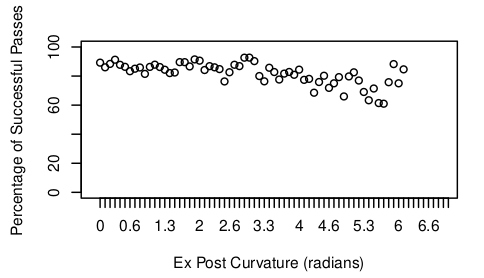Working Papers
Brause, S. and D. Bernstein (2019) "Properties of Successful Passes in Soccer", Computer Science Department, James Madison University.
Videos
These videos show a single possession of a soccer match. The offensive team is shown in purple and the defensive team is shown in gold. The offensive team is attacking the goal on the right side of the field. When an offensive player gains control of the ball, the probability that a pass to a teammate will be successful is shown as a colored line ranging from bright red (a probability of 0) to bright green (a probability of 1).
The first video shows a situation in which the defensive team is playing conservatively. One interesting aspect of this video is that many of the passes do not advance the ball towards the opposing team's goal.
The second video shows a situation in which a wide variety of different high probability, and some low probability, passes are completed.
The third video shows a situation in which the last pass was very ill-advised (i.e., had a very low probability of success).

